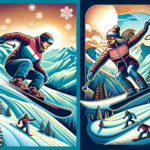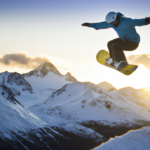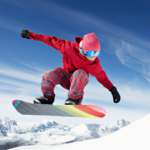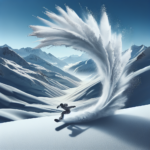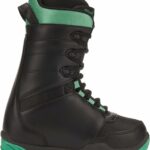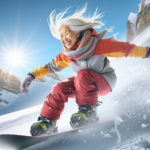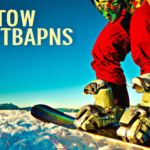Picture this: You’re carving your way down a snow-capped mountain, the chilly wind rushing past your face, your heart pounding with adrenaline. This isn’t just a recreational activity, it’s a workout in disguise. In the thrilling world of snowboarding, you’re not only having the time of your life, you’re also burning calories—a win-win situation! So, ever wondered about the exact number of calories you might be torching while sliding down those snowy slopes? With the help of some scientific research and expert insight, you’re about to find out just how effective snowboarding can be as a calorie-burning workout. “How Many Calories Do You Burn Snowboarding?” has the answers you need.
Understanding Calorie Burn and Snowboarding
In an environment where health and wellness are increasingly becoming a priority, understanding how physical activity can benefit you is essential. One crucial element here is the relationship between physical activity and calorie burn. When you engage in any form of activity or manual work, your body burns calories providing you with the needed energy.
The link between physical activity and calorie burn
The basic rule of thumb is that the more strenuous the activity, the more calories your body burns. Most importantly, your body burns these calories to create energy, supporting your muscles to keep moving. Whether you’re running, swimming, doing housework or dancing, you’re burning some level of calories. The intensity and duration of your physical activity play a primary role in determining how many calories you ultimately burn.
Why snowboarding is a significant calorie burner
Enter snowboarding, a winter activity that provides an intense full-body workout. Snowboarding not only requires substantial energy to make sharp turns and maintain balance, but it also prompts your body to function harder to keep warm in the cold environment. Factors such as the style of snowboarding, your weight, and even the environmental conditions influence the number of calories you burn during snowboarding.
Factors influencing Calories Burned during Snowboarding
Your calorie burn during snowboarding isn’t constant – it can vary significantly based on many factors.
Your weight
It’s simple physics – the more mass an object has, the more force is needed to move it. The same principle applies to your body weight. Persons with heavier weight naturally burn more calories while snowboarding compared to their lighter counterparts, as their bodies require more energy to propel their weight downhill.
The intensity of your ride
A leisurely ride down a short, gentle slope won’t burn as many calories as a harder, faster run down a steeper trail. Intensity is also primarily dependent on your skill level. Advanced snowboarders likely to take on more challenging slopes, leading to a higher calorie burn.
Style of Snowboarding
Snowboarding style also plays a significant role. For instance, freestyle snowboarding, which includes performing tricks and jumps, could burn more calories than alpine or racing snowboarding.
Environmental conditions
Moreover, environmental conditions such as the temperature, altitude, and snow conditions can also affect the intensity of your workout and in turn, the number of calories you burn.
Calculating Calories Burned during Snowboarding
As you would imagine, it’s quite challenging to determine precisely how many calories you burn during snowboarding on the fly. However, there are reliable methods to give you an estimate.
Using metabolic equivalent tasks (METs)
The MET system helps estimate the caloric expenditure of a specific physical activity. For example, snowboarding has a MET value of about seven, implying it’s seven times more energy demanding compared to the benchmark basal metabolic rate (BMR).
Using fitness watches and trackers
Wearable technology like fitness watches and trackers has made it more manageable to track calorie burn throughout your snowboarding session. Keep in mind that while these gadgets offer a decent estimate, they aren’t always entirely accurate.
Using online calorie-burn calculators
Online calorie calculators use factors like your weight and activity duration to compute your approximate calorie burn. Again, this is not a flawless measure, but they do offer you a reasonable estimate.
Average Calorie Burn for Snowboarders
With the understanding that many factors can influence the estimated calorie burnt, there’s still an average range for snowboarders.
Calorie burn for casual snowboarding
For a casual snowboarder taking leisurely rides down moderate slopes, you could expect to torch about 250 to 300 calories per hour.
Calorie burn in competitive snowboarding
Competitive snowboarders navigating challenging terrains at high speeds could burn up to 600 or more calories per hour.
Comparing calorie burn in snowboarding to other winter sports
This estimate puts snowboarding in a relatively high position when compared with other winter sports. It burns fewer calories than cross-country skiing due to the recovery phase on the lift, but it burns more than downhill skiing due to the additional effort in steering the single board.
Effect of Body Weight on Calorie Burn
Your body weight plays an essential role in determining how many calories you burn during snowboarding or any other physical activity.
Calories burned by light-weight snowboarders
A snowboarder who weighs around 125 pounds might burn approximately 240 calories in an hour of moderate snowboarding.
Calories burned by heavy-weight snowboarders
In contrast, a 185-pound snowboarder might burn around 355 calories per hour under similar conditions.
How to increase calorie burn based on weight
Regardless of your weight, to burn more calories, you should increase the intensity, speed, and duration of your snowboarding sessions.
Impact of Snowboarding Intensity on Calorie Burn
Intensity is a significant factor in how many calories you burn while snowboarding.
Calorie burn during low-intensity snowboarding
Low-intensity snowboarding, such as slowly maneuvering down a gentle slope, burns significantly fewer calories than more vigorous styles of snowboarding.
Calorie burn during high-intensity snowboarding
In contrast, high-intensity snowboarding, like careening dow steep slopes at high speeds, can burn a high amount of calories.
Adjusting intensity for maximal calorie burn
If you’re snowboarding primarily for a workout, adjusting your speed, route, and technique can help you maximize calorie burn.
Role of Snowboarding Style in Calorie Burn
Snowboarding style drastically influences calorie burn.
Calorie burn in freestyle snowboarding
Freestyle snowboarding, which typically involves a lot of tricks, jumps, and extreme agility, can burn an impressive amount of calories, considering how energy-intensive these movements are.
Calorie burn in alpine or race snowboarding
Alpine or race snowboarding, on the other hand, might not burn as many calories as freestyle snowboarding but can still offer a good workout due to the speed and precision required.
Maximizing calorie burn based on style of snowboarding
No matter your preferred style of snowboarding, increasing your speed, navigating steeper routes, and extending your snowboarding session duration can help you burn more calories.
Influence of Environment on Snowboarding Calorie Burn
The environmental conditions during your snowboarding session can have an impact on your calorie burn.
How temperature affects calorie burn
Colder temperatures might make your body work harder to keep warm, potentially increasing the number of calories burned.
Impact of altitude on calorie burn
Altitude can also impact your snowboarding workout. Some studies suggest that the body burns more calories at higher altitudes, although more research is needed in this area.
The role of snow conditions in determining calorie burn
Finally, different snow conditions can also affect your calorie burn. Powder snow might require more energy to navigate, thus increasing your calorie burn, compared to a more well-groomed trail.
Enhancing Calorie Burn While Snowboarding
Looking to get the most out of your snowboarding calorie burn? Here are some strategies:
Incorporating interval training
Including high-intensity intervals during your snowboarding session can boost your calorie burn. Think sprinting downhill as fast as you can, then slowly maneuvering a more manageable slope.
Increasing snowboarding duration
The longer you snowboard, the more calories you will burn. Consider extending your snowboarding sessions where possible.
Maintaining proper hydration and nutrition
Your body needs proper fuel to function efficiently and maximize calorie burn. Ensure you stay hydrated and consume a balanced diet full of nutritional foods.
Avoiding Common Misconceptions about Calorie Burn and Snowboarding
When it comes to calorie burn and snowboarding, there are some common misconceptions you should consider.
Misunderstanding the impact of extreme cold
While extreme cold can make your body work harder, it doesn’t significantly boost calorie burn. Overestimating the effect of cold on your calorie burn can lead to consuming excessive calories.
Overestimating the impact of gear weight
While heavier gear requires more energy to carry, the impact of gear weight on calorie burn is usually relatively small.
Ignoring the effect of resting intervals on overall calorie burn
Finally, it’s essential to remember that resting intervals, like when you’re on the lift, affect your total snowboarding calorie burn. Even the most intense snowboarding session can have a lower overall calorie burn if long rest periods are involved.
In conclusion, it’s undeniable that snowboarding is a beneficial physical activity that can effectively burn calories. Despite the influence of various factors on this, you can maximize your calorie burn by modifying your intensity, duration, and embracing efficient snowboarding style and techniques. Lastly, discarding any misconceptions and embracing the truth about calorie burn can help you make the most health benefits out of your snowboarding sessions.
- What Snowboard Bindings Should I Get? - January 23, 2024
- What Size Screws For Snowboard Bindings? - January 23, 2024
- How To Snowmobile On Water? - January 23, 2024


